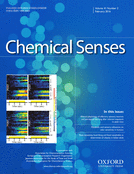
“Interest in the medicinal use of cannabis and cannabinoids is mounting worldwide. Fueled by enthusiastic media coverage, patients perceive cannabinoids as a natural remedy for many symptoms. Cannabinoid use is of particular interest for older individuals who may experience symptoms such as chronic pain, sleep disturbance, cancer-related symptoms and mood disorders, all of which are often poorly controlled by current drug treatments that may also incur medication-induced side effects. This review provides a summary of the evidence for use of cannabinoids, and medical cannabis in particular, for this age group, with attention to efficacy and harms. Evidence of efficacy for relief of an array of symptoms is overall scanty, and almost all study participants are aged < 60 years. The risk of known and potential adverse effects is considerable, with concerns for cognitive, cardiovascular and gait and stability effects in older adults. Finally, in light of the paucity of clinical evidence and increasing patient requests for information or use, we propose a pragmatic clinical approach to a rational dialogue with older patients, highlighting the importance of individual benefit-risk assessment and shared patient-clinician decision making.”
https://www.ncbi.nlm.nih.gov/pubmed/30488174
https://link.springer.com/article/10.1007%2Fs40266-018-0616-5
“Our study finds that the therapeutic use of cannabis is safe and efficacious in the elderly population. Cannabis use may decrease the use of other prescription medicines, including opioids.” https://www.ncbi.nlm.nih.gov/pubmed/29398248








 “The therapeutic potential of
“The therapeutic potential of